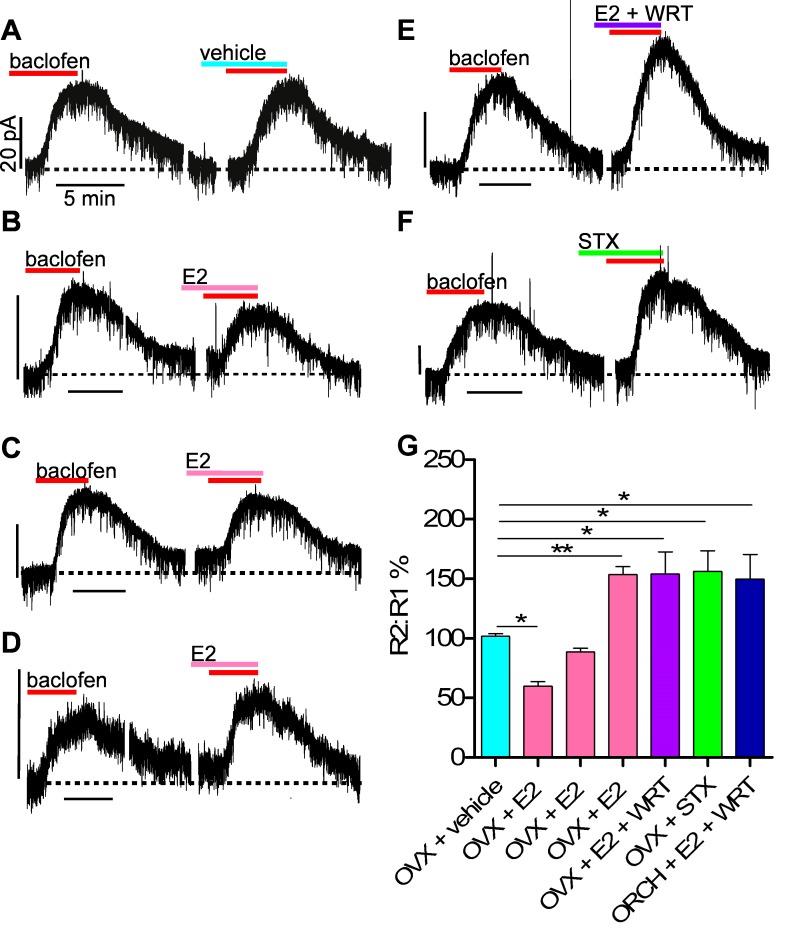Fig. 5.
E2 and the Gq-mER ligand STX differentially modulate the GABAB response in NPY/AgRP cells from gonadectomized mice. A–F: representative traces of GABAB responses from ovariectomized (OVX) females before and after application of E2 or STX with or without additional pharmacological manipulations (see below). Experiments were conducted as shown in Fig. 1. Dotted line represents baseline current. Vhold = −50 mV. Vertical scale bars represent 20 pA; horizontal ones represent 5 min. For illustrative purposes, most of the 15-min treatment period between GABAB responses (R1 and R2) is removed. Other small breaks in the recording indicate removal of slightly prolonged return to baseline current levels following baclofen application. G: bar graphs summarizing effects of E2 and STX (both 100 nM) on the GABAB response (baclofen, 10 μM) in NPY/AgRP neurons. In OVX females, baclofen elicited 2 equal-amplitude responses during perfusion of vehicle (n = 4), but E2 suppressed (n = 7), enhanced (n = 11), or had no net effect (n = 6) on the GABAB response. Coperfusing a PI3K inhibitor (WRT, 100 nM, n = 6) with E2 or simply applying STX (n = 5) purely enhanced the response. E2 similarly affected the GABAB response in orchidectomized (ORCH) males (see results) and coperfusing wortmannin (n = 4) isolated the enhancement. *P < 0.05, **P < 0.01, vs. vehicle control group.

